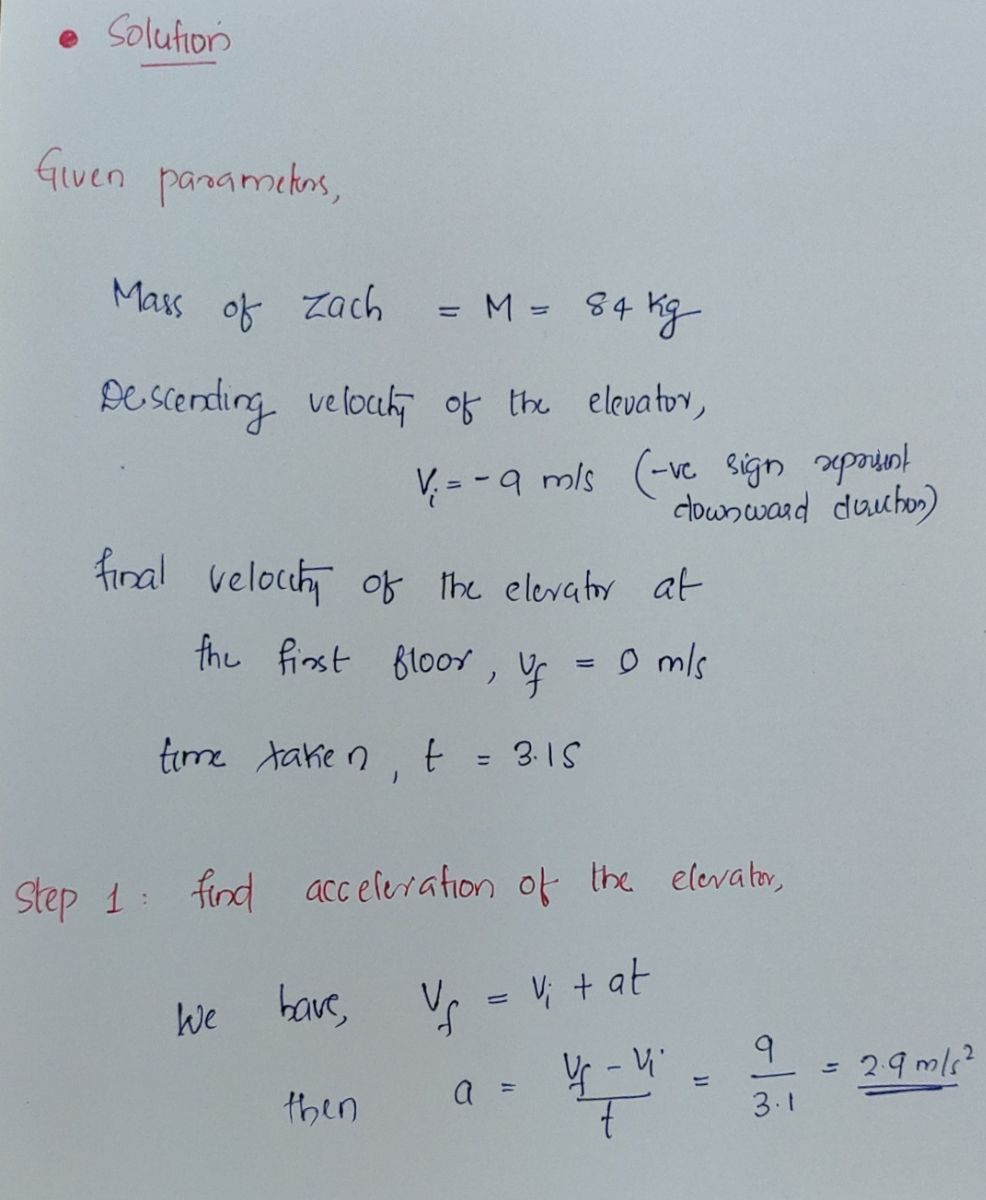College Physics
11th Edition
ISBN:9781305952300
Author:Raymond A. Serway, Chris Vuille
Publisher:Raymond A. Serway, Chris Vuille
Chapter1: Units, Trigonometry. And Vectors
Section: Chapter Questions
Problem 1CQ: Estimate the order of magnitude of the length, in meters, of each of the following; (a) a mouse, (b)...
Related questions
Question
please i need help with both of them, Thank you

Transcribed Image Text:I Review Constants
Zach, whose mass is 84 kg, is in an elevator
descending at 9 m/s. The elevator takes 3.1 s to
Part B
brake to a stop at the first floor.
What is Zach's weight while the elevator is braking?
Express your answer with the appropriate units.
HA
?
1016.25
w =
S
Submit
Previous Answers Request Answer
X Incorrect; Try Again; 2 attempts remaining

Transcribed Image Text:I Review | Constants
Two bicycle tires are set rolling with the same initial
speed of 3.9 m/s along a long, straight road, and
the distance each travels before its speed is
reduced by half is measured. One tire is inflated to
a pressure of 40 psi and goes a distance of 18.6 m
; the other is at 105 psi and goes a distance of 92.4
m . Assume that the net horizontal force is due to
rolling friction only and take the free-fall
acceleration to be g = 9.8 m/s?.
Part A
What is the coefficient of rolling friction ur for the tire under low pressure?
• View Available Hint(s)
Hr =
Submit
Part B Complete previous part(s)
Expert Solution
Step 1

Trending now
This is a popular solution!
Step by step
Solved in 3 steps with 2 images

Recommended textbooks for you

College Physics
Physics
ISBN:
9781305952300
Author:
Raymond A. Serway, Chris Vuille
Publisher:
Cengage Learning

University Physics (14th Edition)
Physics
ISBN:
9780133969290
Author:
Hugh D. Young, Roger A. Freedman
Publisher:
PEARSON

Introduction To Quantum Mechanics
Physics
ISBN:
9781107189638
Author:
Griffiths, David J., Schroeter, Darrell F.
Publisher:
Cambridge University Press

College Physics
Physics
ISBN:
9781305952300
Author:
Raymond A. Serway, Chris Vuille
Publisher:
Cengage Learning

University Physics (14th Edition)
Physics
ISBN:
9780133969290
Author:
Hugh D. Young, Roger A. Freedman
Publisher:
PEARSON

Introduction To Quantum Mechanics
Physics
ISBN:
9781107189638
Author:
Griffiths, David J., Schroeter, Darrell F.
Publisher:
Cambridge University Press

Physics for Scientists and Engineers
Physics
ISBN:
9781337553278
Author:
Raymond A. Serway, John W. Jewett
Publisher:
Cengage Learning

Lecture- Tutorials for Introductory Astronomy
Physics
ISBN:
9780321820464
Author:
Edward E. Prather, Tim P. Slater, Jeff P. Adams, Gina Brissenden
Publisher:
Addison-Wesley

College Physics: A Strategic Approach (4th Editio…
Physics
ISBN:
9780134609034
Author:
Randall D. Knight (Professor Emeritus), Brian Jones, Stuart Field
Publisher:
PEARSON